For three years now I have been sharing pictures from my Viking River Cruise down the Rhine in Europe. And for the last few months I have been sharing pictures from Heidelberg, Germany which was where we spent most of a day touring the Castle and the Altstadt. After the castle, the next most famous site in Old Town Heidelberg is the Hotel Zum Ritter St. Georg. It is the oldest surviving house in Heidelberg; it was built in 1592 and has survived multiple fires and many, many wars.
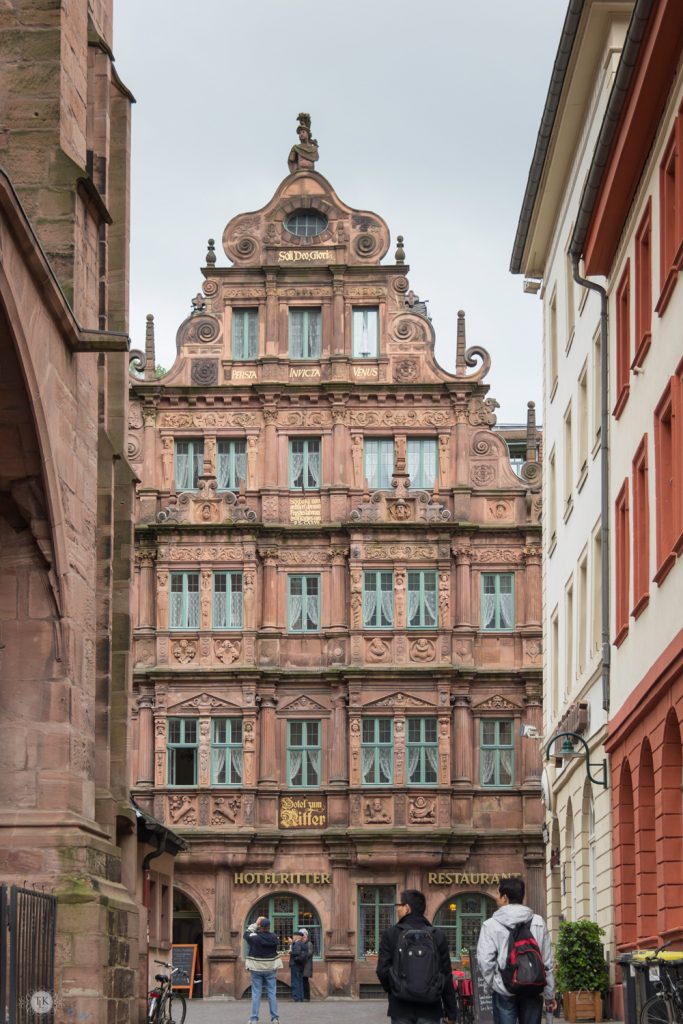
Our tour guide Evelyn gave us some history as we walked by on our guided tour of Old Town or Altstadt. It borders the Marktplatz and Heiliggeistkirche. We did not tour inside but were told we could come back on our free time and explore further if we wished.
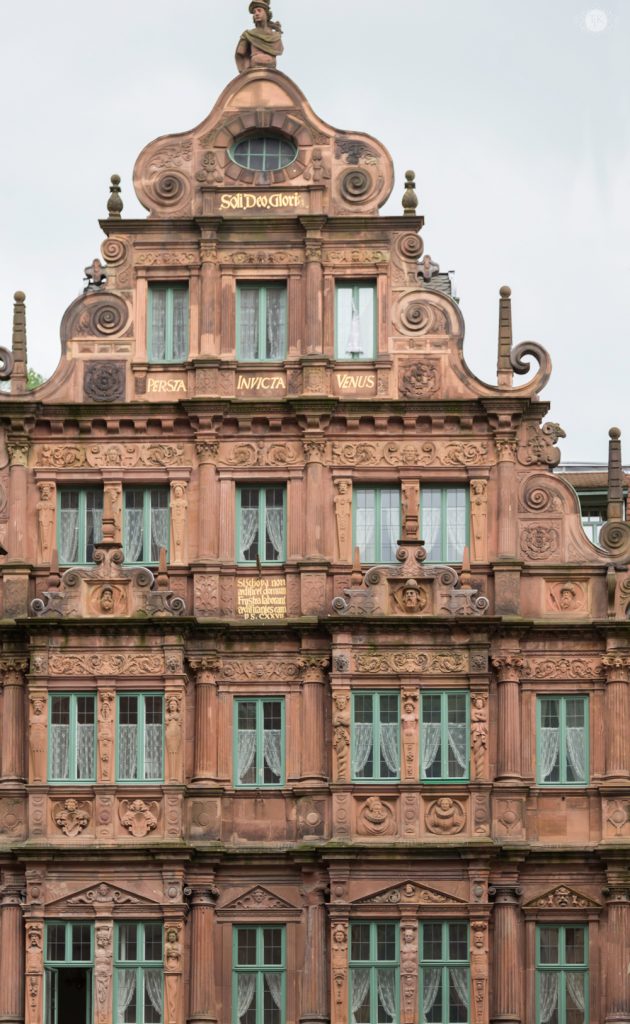
It was built as a house originally by Franziska and Carolus (Charles) Belier, cloth merchants that fled France due to religious persecution and settled here. It is a fine example of Renaissance architecture and the characters on the facade are simply amazing.
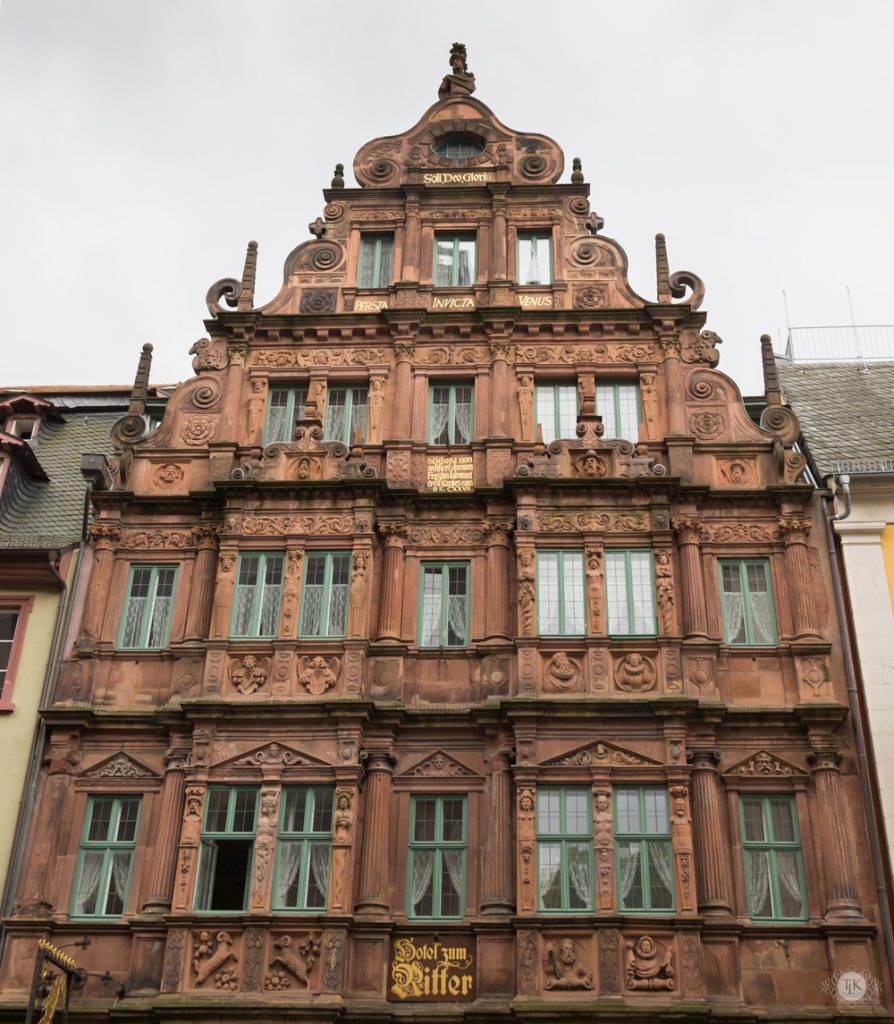
The lore is that because it was made of stone it was able to survive all of the tumult surrounding it. And there are three gilded inscriptions that speak to the devotion the Belier’s felt to their Lord on the facade along with caricatures of themselves.
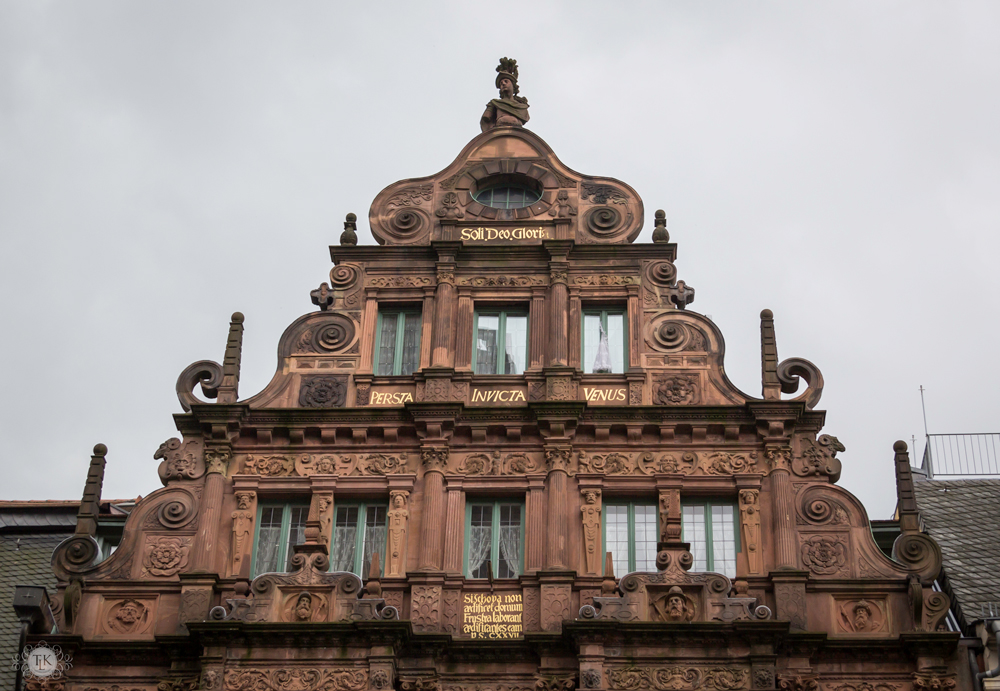
You can see the inscriptions above. The first is on the bottom – it reads:
Si Iehova non aedificet domum, frustra laborant aedificantes eam
Roughly translated that means “If God did not build this house, the builders worked in vain.” The second inscription above the pediment reads:
Persta Invicta Venus
That translates to “Always remain undefeated my Beauty.” The last at the very top reads:
Solos Deo Gloria
And that roughly translated means Glory only to God. Maybe that is why the house still stands today.
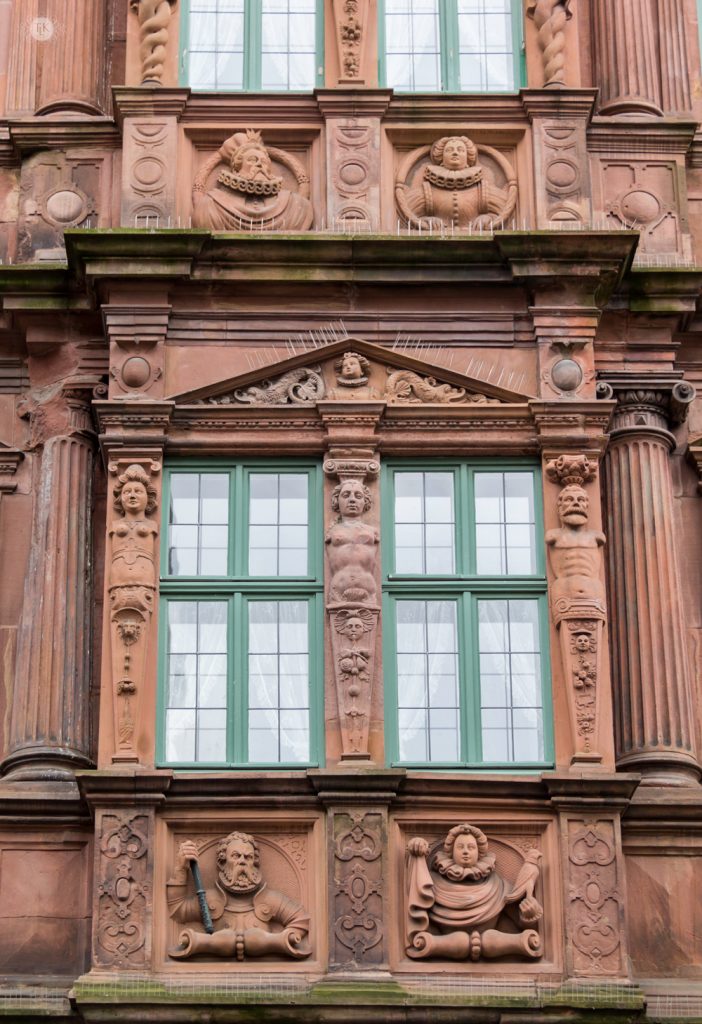
Above you can see caricatures of Carolus and Franziska. They were wealthy and thought highly of themselves to include several images of themselves.
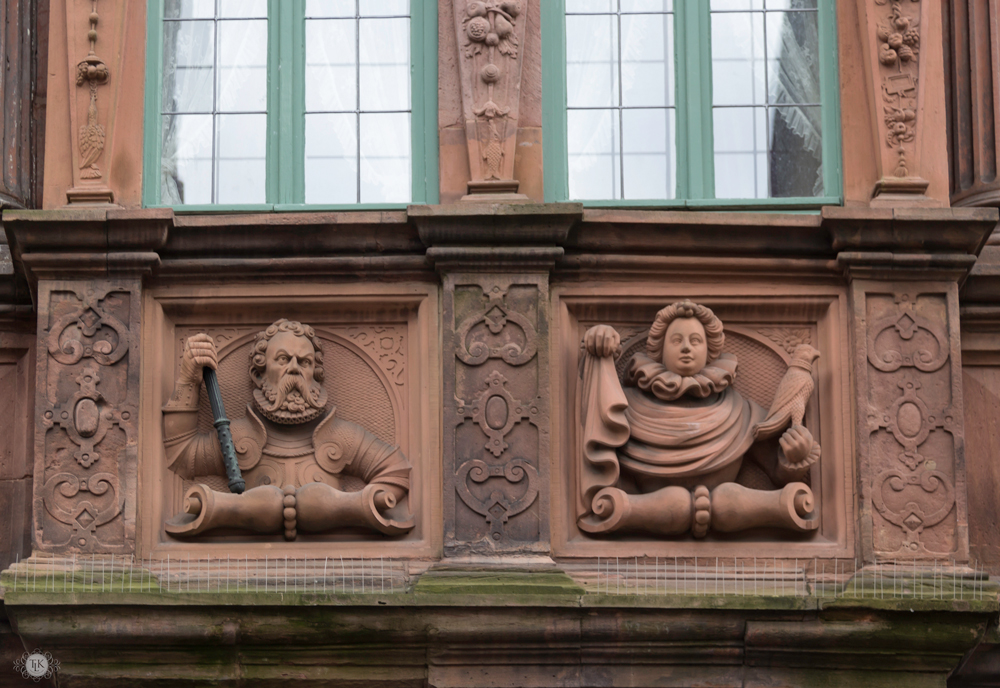
Here is a better shot of the Beliers under one of the many windows.
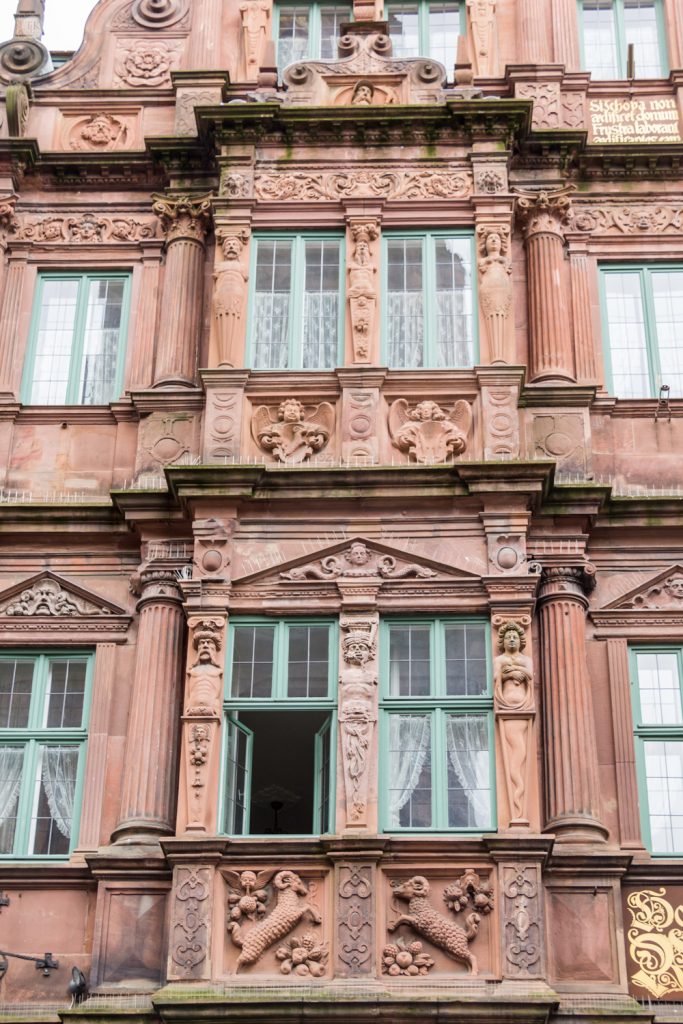
There were other images, too, like the cherubs or angels, rams, symbols of bounty and wealth and no one knows for sure if any of the images may be of their family or children.
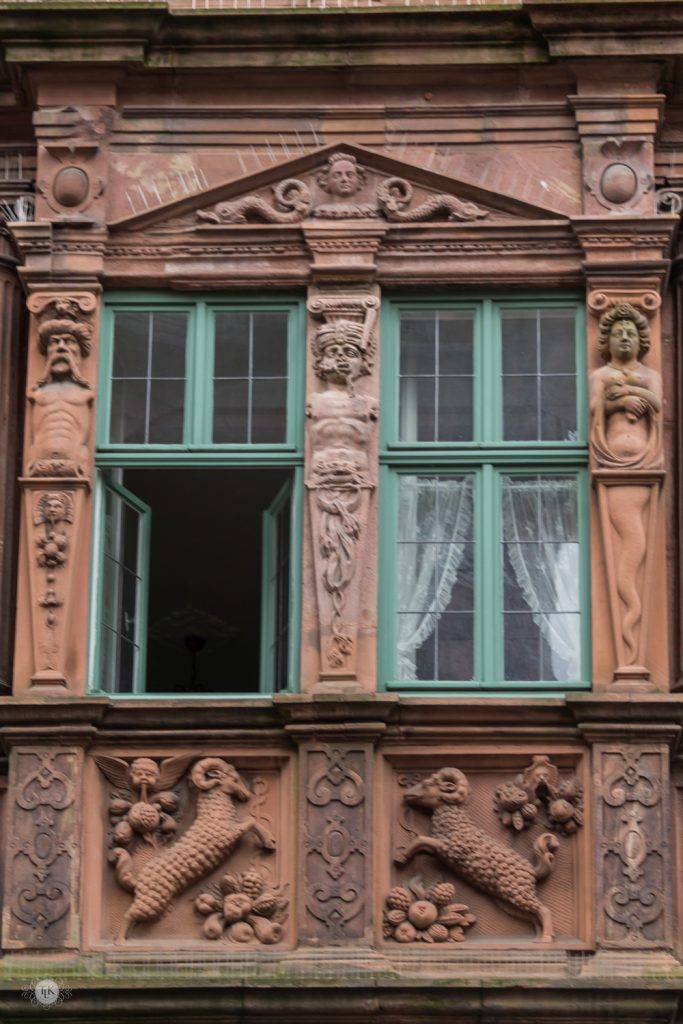
But they definitely were fun to look at. It really was amazing that all of this could have survived for so long. The detail is really amazing.
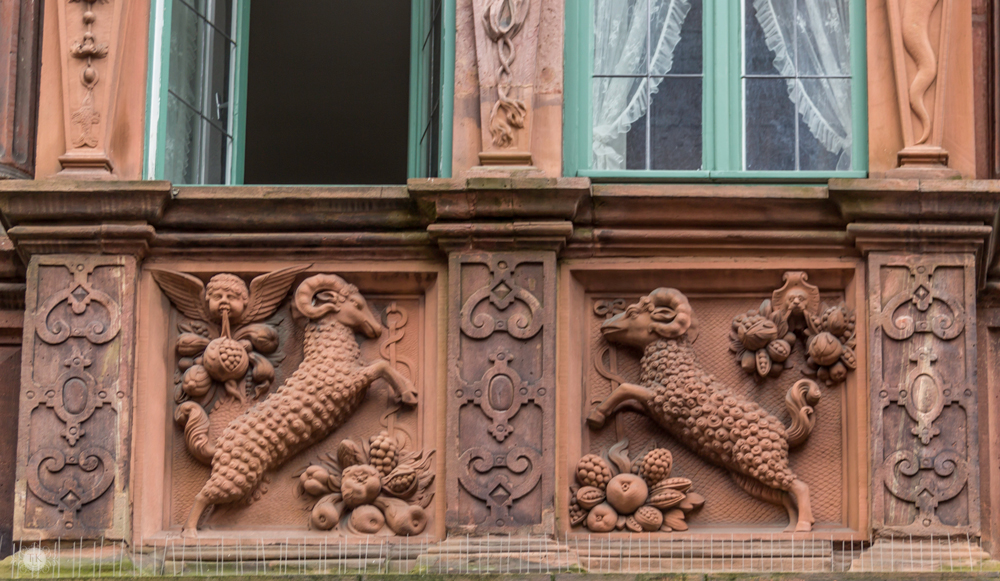
The building remained private for over a century, surviving several wars and burnings. In 1693 it was used as a town meeting place when the Rathaus was destroyed. After a while it became a tavern and in 1842 was turned into a hotel. It has been renovated and updated inside, but the famed facade remains unchanged.
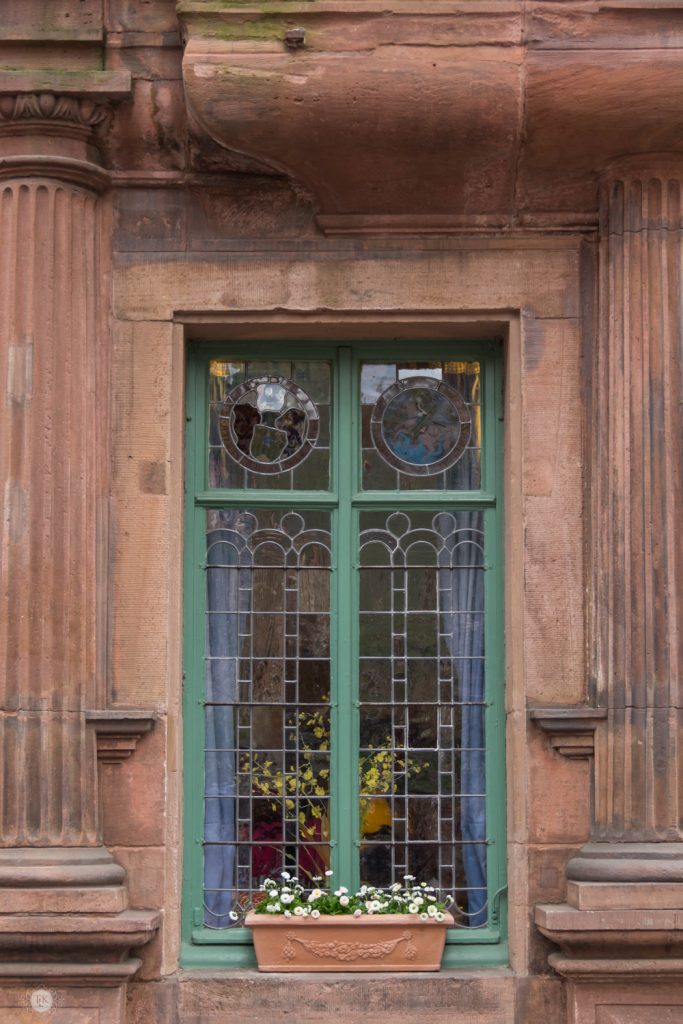
The ground floor houses a restaurant today and I loved the stain glass windows. Originally the windows and shutters were designed to showcase the fabrics that the Beliers sold out of their shop.
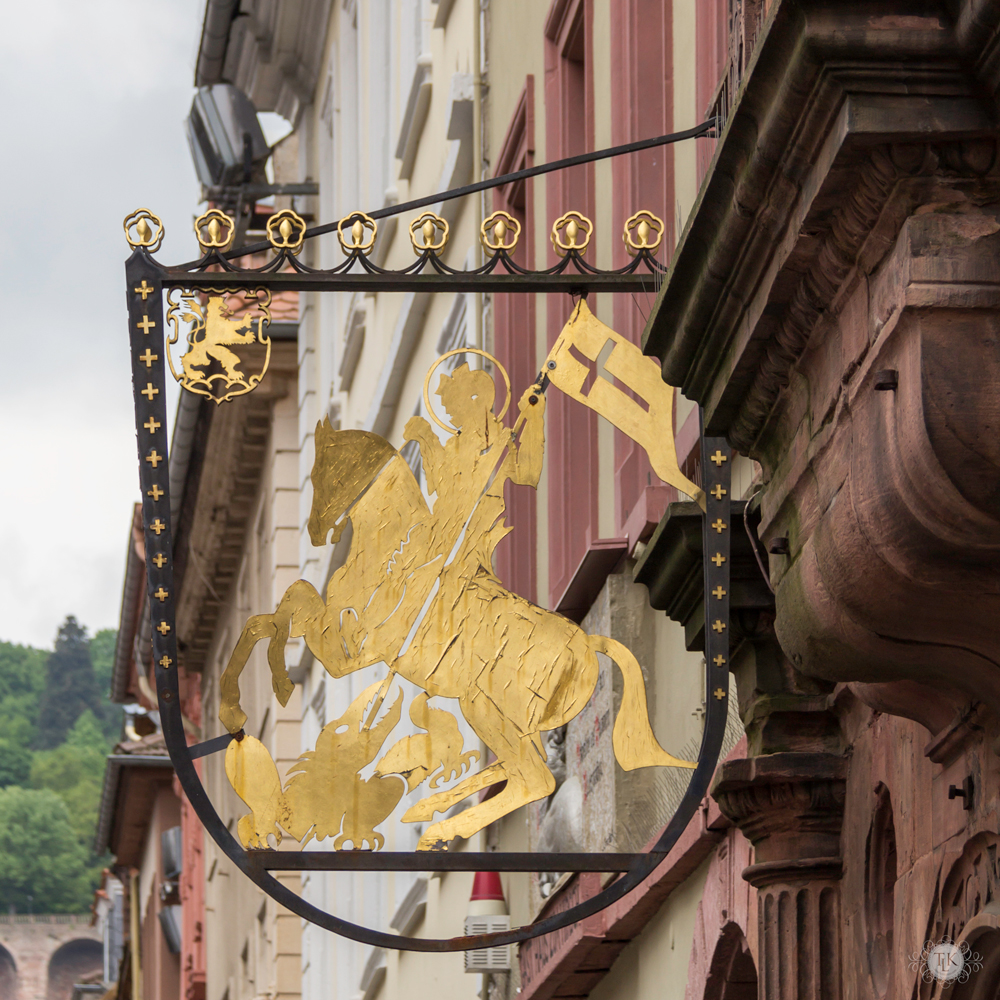
And if you are wondering about the “Ritter” in the hotel name, it comes from the Knight of St. George, which you can see above on the hotel’s official sign. There is a statue of Ritter (Knight) St. Georg on the gable, thus that is how the house came to be known by the residents of Heidelberg. And many, many years ago when most of the city’s residents did not read, buildings would come to be known by a prominent feature and so the business sign would also incorporate that feature. This is something we also learned about while visiting the Dom in Cologne – the importance of being able to communicate to those that could not read and tell them the story of salvation in that instance – or provide directions to an establishment in a city. You would simply tell someone to go the the sign of the Ritter if you wanted to tell them to go to the hotel.
Maybe next up I should share some of the pretty signs we came across while in Heidelberg. Stay tuned…
This is not a sponsored post. This is my experience from my trip with Viking River Cruises. Email me to find out how you can save $100 when you book your first cruise with Viking through their referral program.
Leave a Reply